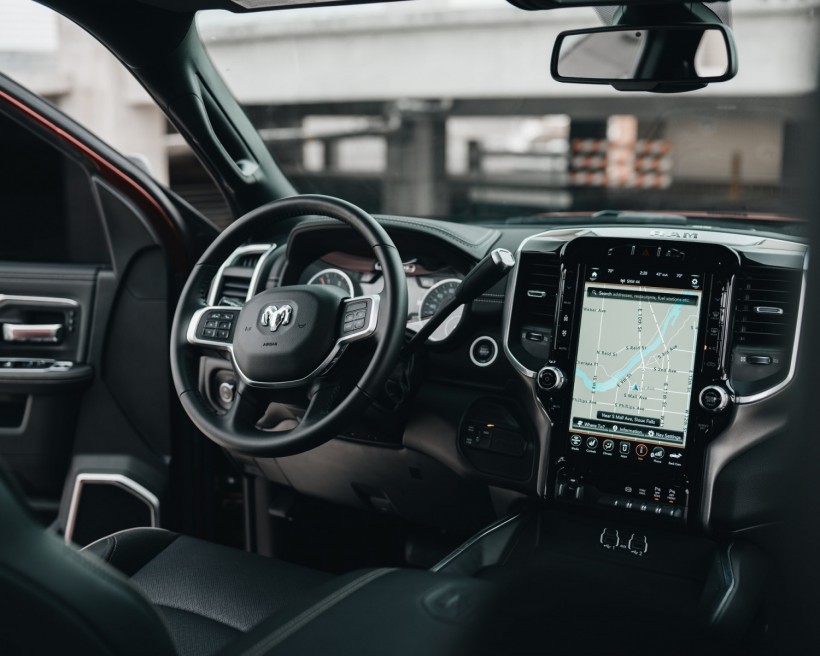Do you remember when Doc and Marty took a trip Back To The Future in their flying DeLorean? Or when George Jetson hopped in his self-driving spaceship to head to the office? Well, flying cars aren't on the agenda for years to come, but fully-automated vehicles are, and the advantages are absolutely astounding.
What Is An Autonomous Car?
An autonomous vehicle (AV), more frequently referred to as self-driving, is a vehicle that has the capacity to operate sans driver. While there are already a few on the market, a fully autonomous vehicle has yet to hit the market.
There are 6 levels of development, ranging from 0-5, with each level increasing in autonomous functions:
-
Level 0: Manual Driving
If you have a vehicle manufactured before the 1990s, you will find there are no tools to assist driving. Not even power-steering. These are considered level 0 AVs. Vehicles manufactured after the 90s come equipped with at least cruise control.
-
Level 1: Driver Assistance
The driver can request the car to perform ONE of these tasks: steering control OR accelerating/braking. Cruise control and emergency brake assistance are examples of basic driver assistance.
-
Level 2: Partial Automation
A level 2 vehicle comes equipped with additional features, such as lane assist, backup cameras, and eco boost modes. All vehicles manufactured today are at least a level 2 and still require the driver to be fully engaged and paying attention.
-
Level 3: Conditional Automation
Level 3 vehicles come equipped with features that allow the driver to be disengaged with the driving process. For example, these vehicles have the ability to steer and control cruise on programmed straight routes and will transfer control back to the driver when it's time to turn.
-
Level 4: High Automation
When it comes to level 4, vehicles are predominantly automated and can self-operate on the highway or in town on pre-planned routes. The driver can be fully disengaged and even take a nap while the vehicle gets him/her from point A to B. The control can be manually adjusted and if the vehicle can no longer safely operate, it will notify the driver to take control, such as when the roads are icy or wet. If the driver does not respond, the vehicle will stop itself. The most well-known level 4 vehicle is manufactured by Tesla.
-
Level 5: Fully Autonomous
There is no level 5 vehicles commercially produced or sold in the US as of the writing of this article but there are companies and cities that have taken initiative in testing fully autonomous vehicles. Nevada, for example, has implemented an automated delivery system using driverless vehicles.
It is predicted that fully autonomous vehicles will account for 50% of cars on the road by 2050. The unique aspect of these vehicles is that they don't require a driver, which opens up transportation for people without a license or who have a disability that prevents them from operating a vehicle.
Impact of Self-Driving Vehicles
All of the vehicles at or above level 4 come equipped with the most advanced safety features and technology, so it stands to reason they will have a positive impact on consumers and the environment. Let's look at a few advantages of owning or operating a self-driving car.
-
Reduced Emissions
Most, if not all, self-driving vehicles are either fully electric or have the option to operate primarily on electricity. This means that they don't rely on fuel to operate. It makes sense, then, that they would be environmentally friendly as they are not emitting carbon or other dangerous greenhouse gases.
The other advantage is that, through automation, these vehicles are better able to control acceleration and braking, and can maintain speed better than a physical driver can. If there are traffic jams, AVs can make maneuvers with less stop-and-start behavior or can hold a specified speed as they navigate cities.
This reduces emissions as well as most vehicle pollution occurs when a vehicle is stopping and starting at low speeds or when they are operating at high speeds. A self-driving vehicle can maintain speed and reduce braking incidents, releasing fewer emissions. This pertains especially to vehicles that are hybrid and operate on fuel and electricity.
-
Reduced Insurance Rates/Liability
It stands to reason that if an automated car reduces human error by a significant margin, consumers should see a reduction in premiums. There is still much research and development needed to demonstrate that AVs are safer, but experts claim that vehicle manufacturers will absorb the brunt of liability when it comes to accidents.
The good news for consumers, though, is that cars are becoming more advanced and the more technology and safety features a vehicle is equipped with, the more discounts insurance companies offer. Consumers who are considering purchasing a SMART vehicle can compare insurance rates to see which companies offer the highest incentives for AV.
Reduced Loss of Life
The intent of transitioning to a world of self-driving vehicles is to minimize or even eliminate accidents and injuries that occur due to human error. AVs use artificial intelligence to learn, replicate, and improve behaviors commonly performed by humans. These computers are able to monitor driver behaviors and road conditions and make adjustments that ideally make our roads safer.
When everything operates as it should, the result is that there are fewer accidents and injuries related to automobiles. This is a significant breakthrough when you consider that over 40,000 people die in motor vehicle crashes yearly and over 25% are a result of distracted driving.
As if that isn't incentive enough to make the shift, AVs also have the capacity to implement emergency protocols if they sense a driver is experiencing a life-threatening situation behind the wheel. Imagine a vehicle that can sense an increase in distress, take control of the vehicle, reroute it, and notify the nearest hospital and ems that you are experiencing an emergency and will be arriving shortly. It's truly mind-blowing but these capabilities are on the horizon.
It used to be that robotic vehicles were the things cartoons and sci-fi movies were made of. We were exposed to flying cars in the 80s through The Jetsons and Back To The Future, and while we won't see flying Teslas any time soon, the future of transportation is automated and it won't be long before driving is something only experienced through simulation or storytelling.
© 2024 NatureWorldNews.com All rights reserved. Do not reproduce without permission.
* This is a contributed article and this content does not necessarily represent the views of natureworldnews.com






